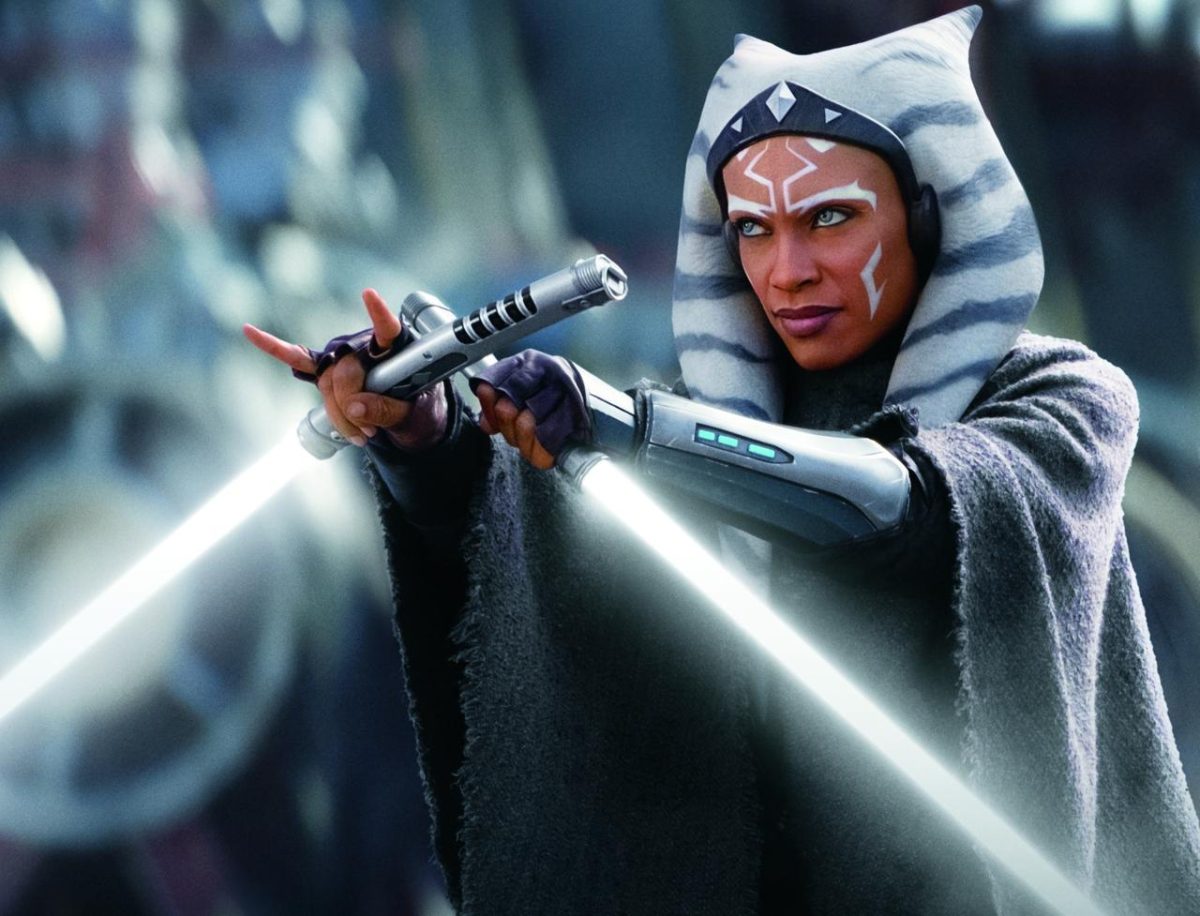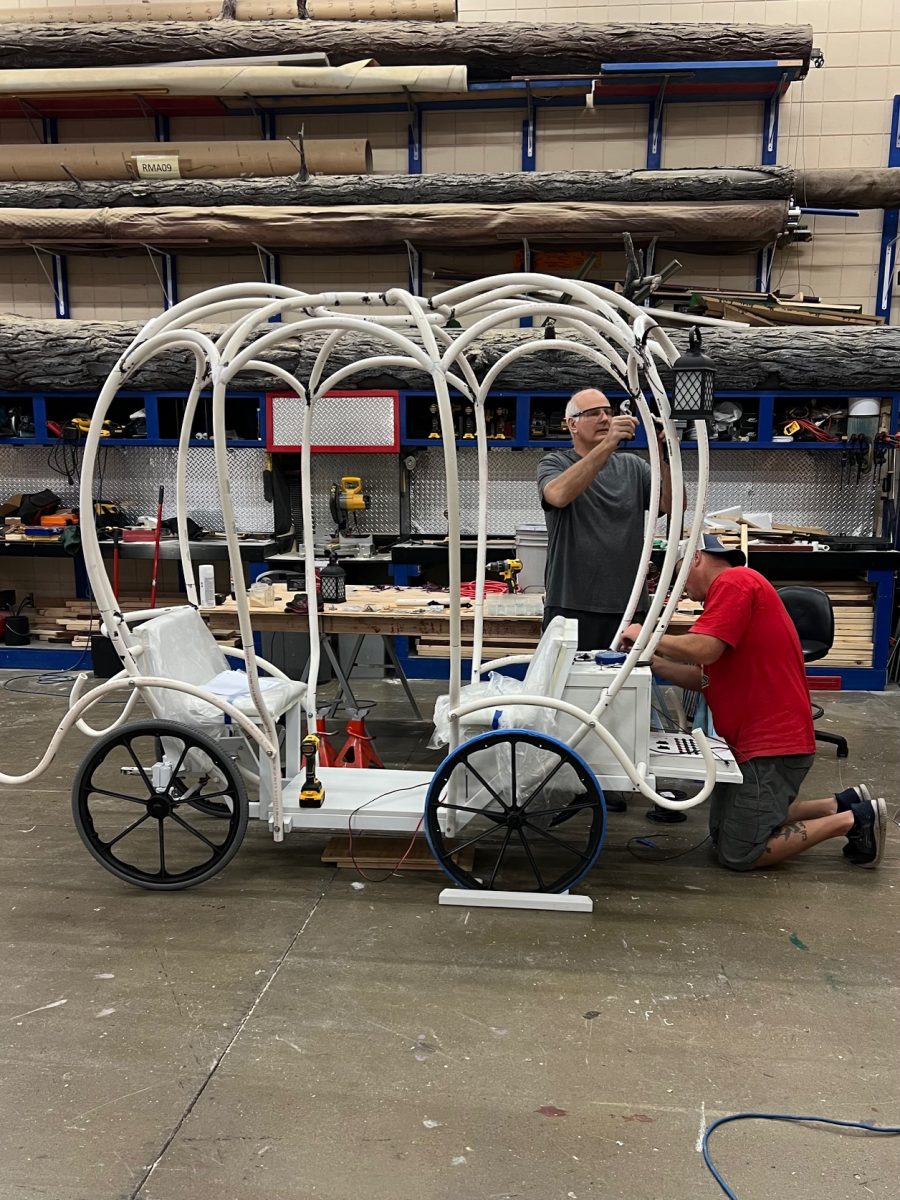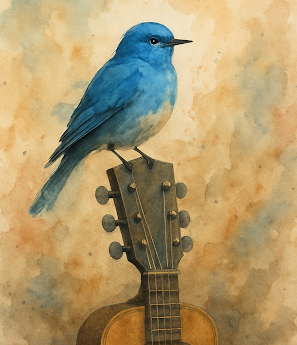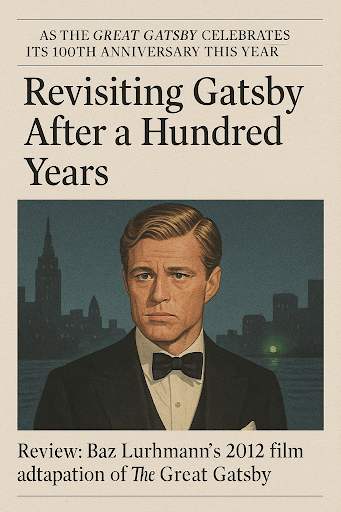Star Wars fans once again revel in good entertainment as the long-anticipated Ahsoka wrapped up its first season. However, not all engines fire for the galaxy far far away.
Ahsoka follows namesake Jedi Ahsoka Tano, introduced to the fandom in 2008’s “The Clone Wars” movie and television series, who quickly became a fan favorite character.
The show centers around the return of Grand Admiral Thrawn; a brilliant military tactician and fan-favorite villain initially introduced in Timothy Zahn’s novel “Heir to the Empire” in 1991. Ahsoka must venture beyond the galaxy to locate the Grand Admiral and bring home her friend, Ezra Bridger, who was lost in Thrawn’s last defeat.
After her brief stints in “The Mandalorian” and “The Book of Boba Fett,” Rosario Dawson from 2005’s “Rent” and “Sin City” returns to the role, accompanied by her lightsaber-building droid companion Huyang (voiced by David Tennant from “Doctor Who”) and Mandalorian/Jedi apprentice Sabine Wren (played by Natasha Lou Bordizzo from 2022’s “Day Shift”).
The villainous Thrawn is once again played by Danish actor Lars Mikkelsen, who previously only voiced the character in the animated show “Star Wars: Rebels.” His performance of the calculating and precise Grand Admiral once again is applauded, as Mikkelsen is able to make the monotonous tactician ruthless and cunning, and worst of all, reasonable.
To be praised as well is the character Balon Skroll, played by the late actor Ray Stevenson from 2011’s Thor. He brings the jaded ex-Jedi to life with a sense of regret, remorse, and once again reason. The villains within Ahsoka will leave viewers questioning if they are truly in the wrong, something to make them compelling for many years to come.
Star Wars continues to give viewers a visual treat with special effects studio Industrial Light and Magic (ILM) creating feature film-level effects through the clever use of CGI and miniatures. Once again, ILM brings the galaxy far far away to stunning realism most uncommon in television.
Writing this time was helmed by Dave Filoni, a veteran Star Wars writer who was handpicked by George Lucas to write the Clone Wars animated series and is considered his spiritual successor to the franchise. Filoni’s familiarity with his animated characters shines through in their transition to live action, as Sabine and Huyang feel identical to their counterparts in Rebels and Clone Wars respectively.
Unfortunately, Filoni’s storytelling falls short with some forced plot moments. Characters have been shown to be protective and wise — until someone utters the line ‘stay together.’ Predictably, characters get separated and drama ensues.
Additionally, the choreography is odd at times, with Ahsoka using a single lightsaber instead of her traditional two for no apparent reason other than plotting. The lack of in-universe logic removes the viewer from the fantasy and reminds them all too clearly they are just watching a show.
Finally, the entire season leaves the viewers craving more, but in an incomplete sort of way. While the set-up of the show leaves open for more content to come, there’s a subtle feeling that the whole show is just an exposition for a larger epic and robs the viewer of a satisfying conclusion.
Granted, with Zahn’s Heir to the Empire novel trilogy having a fair amount of influence over the trajectory of the show, perhaps Star Wars fans are in for something fantastic.
Then again, it still leaves viewers of Ahsoka Season One with an incomplete and bitter-sweet feeling.









